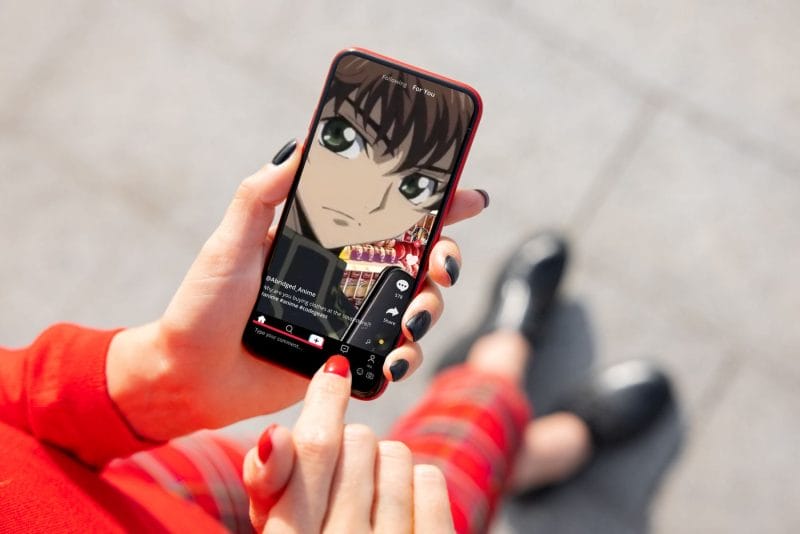The ways that video games from across the globe tackle similar topics has always been fascinating to me. It’s only been in the past decade, though, that I’ve been able to start piecing together the why and explain how different takes on a similar theme or concept can result in wildly different experiences. The reasons usually come down to a matter of cultural differences, which especially apply to games set in modern times, with otherwise contemporary foci or styles. That said, the starkest contrast may be the difference in the way that Japan and western regions tackle games based in bustling metropolises. In order to explain just how different these titles can be and why this is the case, I’ll be looking at two pairs of game franchises, which share some similarities on paper, but manage to be immensely different in practice.
In this first segment, I’ll be highlighting a pair of franchises that don’t seem at all comparable on the surface, but share a similar thematic interest and design focus. From the west, we’ll be looking at Rockstar’s Grand Theft Auto series, which exploded into popularity with Grand Theft Auto III to become one of the most recognizable media franchises on the planet. From Japan, we’ll examine Acquire’s Akiba’s Trip series. In particular, we’ll primarily cover Akiba’s Trip 2, or as it’s known in the west, Akiba’s Trip: Undead and Undressed.
At a glance, both series design their action systems to create fun, unpredictable chaos. Moreover, the two titles share an interest in the concept of consumerism, though their approaches toward game design and theme differ wildly. After all, Grand Theft Auto is about crime, gun violence, and cars. Akiba’s Trip, meanwhile, is about stripping man-made vampires of their clothing to make them burn up in the sunlight, possibly after smacking them around with a computer monitor for awhile.
It’s important to realize both Grand Theft Auto and Akiba’s Trip are masculine power fantasies, albeit in different ways. Grand Theft Auto has focused on the United States’ car and gun cultures since the first entry, inspired heavily by famous crime films and culture. Grand Theft Auto: Vice City took cues from Scarface and ‘80s drug trade thrillers, while San Andreas was inspired by gangsta rap and the media that surrounded its popularity. Within these trappings, the focus has always been on finding power in cars and weapons (particularly guns) in order to commit violence for the player’s own ends, with stories in each game revolving around the pursuit of criminal gain via these means. Later entries get a bit more cynical about this in narrative, but still make it a part of their mechanical cores. Similarly, the gameplay is designed to be chaotic; causing violence in the world creates a feedback loop as the dominoes fall and create an entertaining chain reaction. It creates a uniquely surreal experience, in which Grand Theft Auto’s worlds work on hyper-realism, where everything looks familiar, but NPCs act like cartoon characters and are quick to aggression, encouraging comparably violent responses from the player.
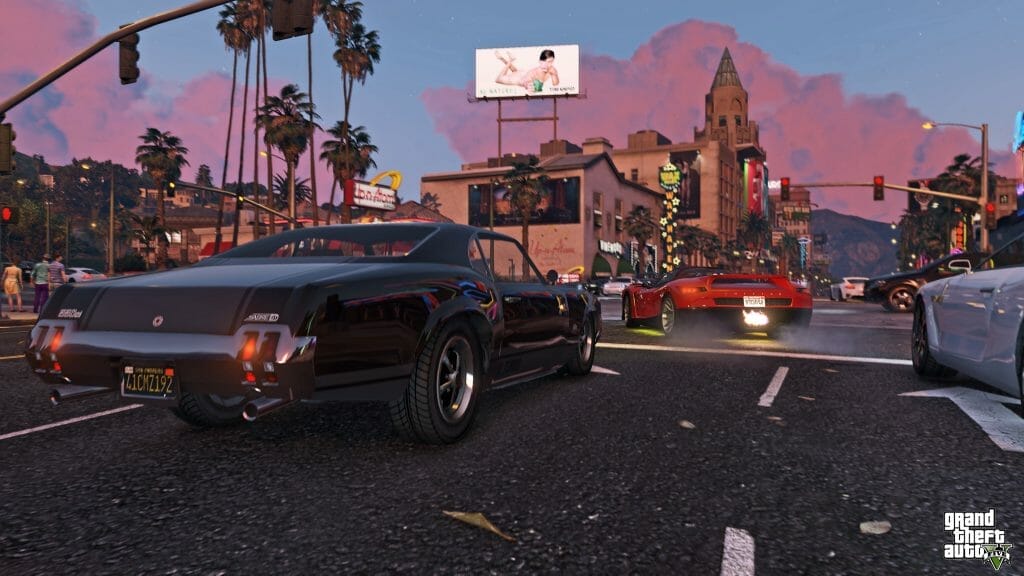
Akiba’s Trip 2, meanwhile, takes inspiration from otaku culture, with a particular emphasis on visual novels, anime, and retro gaming. Many of the moves players can perform are outright lifted from these sources, including a flurry of punches to remove midsection clothing that’s inspired by Fist of the North Star or JoJo’s Bizarre Adventure. Violence is more comical, and the power fantasy focuses more on gaining popularity through side quests, changing how NPCs react to the player on the street. There’s even a harem of girls to choose from, each with their own story path, which offers replay value in a manner that’s similar to visual novels with romance systems. Mechanically, the messy lock-on system turns combat into a series of nonsense brawls, where random NPCs will be pulled in by accidental swings, and it won’t be long before a simple shopping trip turns into an outright riot where everyone’s trying to take off one another’s pants. Like Grand Theft Auto, there’s a value in player created chaos, though more by random chance than encouraging the player to engage it.
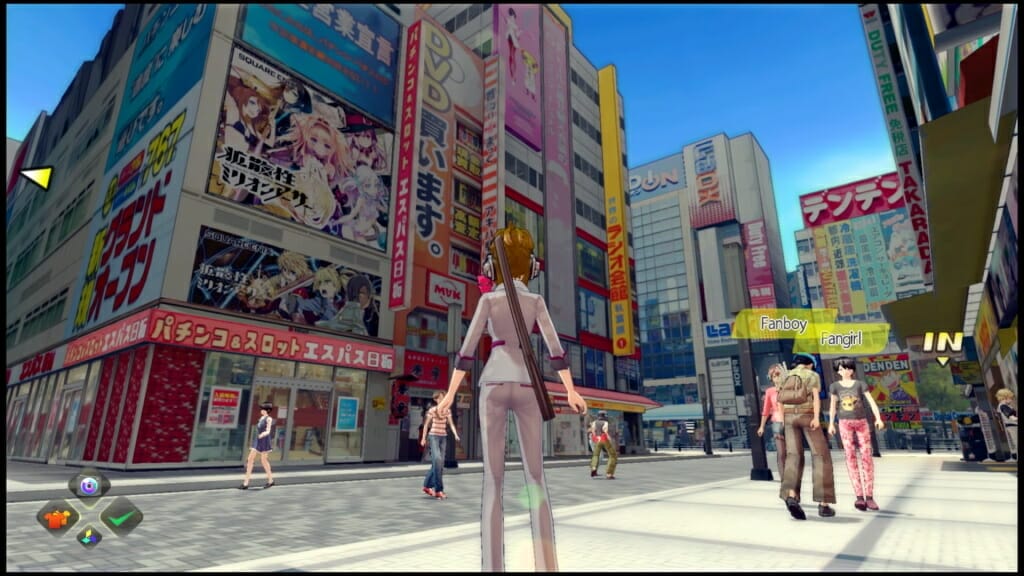
It’s important to remember that the United States is an outlier when it comes to owning guns. Most countries have strict laws with regards to firearm ownership, and Japan is no exception, with rigorous regulations that have ensured that a mere 0.3% of the population owns them . As a result, most games set in Japan don’t have many characters who use guns. If they do, it’s in a theatrical or abstracted way that doesn’t quite match up with more realistic depictions found in American games. Japanese games tend to be more interested in hand-to-hand fighting and melee combat, which is it’s often presented in an over-the-top style that’s similar to the flamboyant presentations found in anime and manga. Cars are also played up more in the States due to a lack of public infrastructure. This puts more value on owning a vehicle, and turns it into a sort of status symbols that slots conveniently into male power fantasies. On the flip side, Japanese cities are more dense and have strong train infrastructures, so cars don’t occupy quite the same mind-share as they do for an American audience.
More than that, though, one has to look at the way Japan and the west look at the concepts of self-worth and individualism. For more than a century, the United States has mythologized the ideal of the self-made man, painting itself as a land of opportunity, where anybody can build a better life with enough gumption. Crime stories take this concept to a cynical extreme, which Grand Theft Auto taps into. Violence, meanwhile, translates into both a masculine value and a way to assert one’s own value in the world.
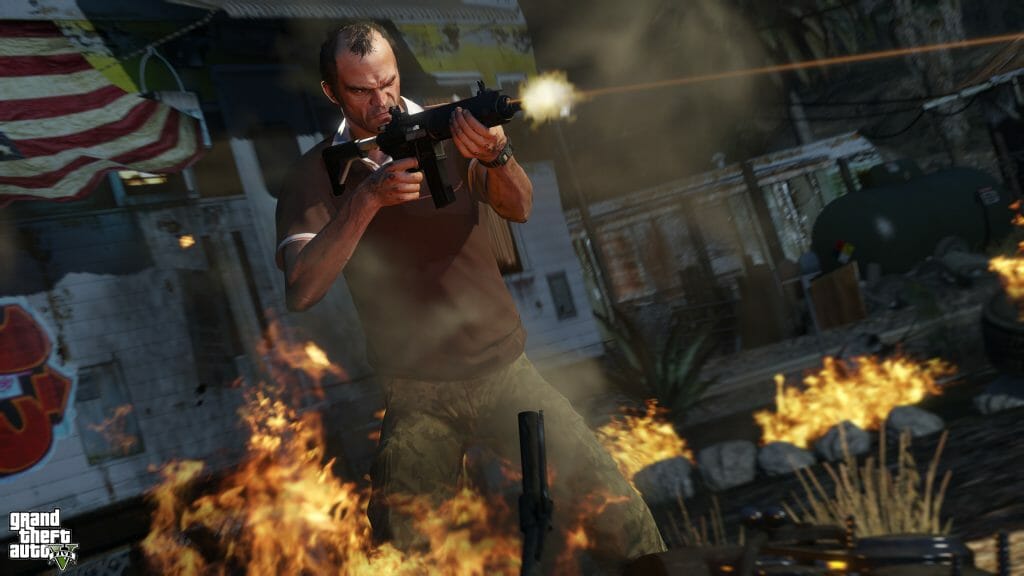
On the flip side, Japan tends to place greater value on the ideals of unity and conformity, what with that old proverb about the nail that sticks up getting hammered down. With this in mind, Akiba’s Trip’s masculine fantasies tap into the concepts of fitting into society and climbing the social ladder via earned popularity and peer feedback, while displaying a command of the female cast’s interests in the process.
Where one culture believes in asserting oneself, the other prefers excelling in one’s given social role for upward momentum (in this case, the hero who solves the core conflict). Both Grand Theft Auto and Akiba’s Trip are ridiculous toy boxes where everything can quickly get out of control. That said, the madness that’s created in each reflects different interests and ideas about what’s most fun for a young, primarily male audience in their home countries.

It’s through this lens that each game also tackles the concepts of with consumerism. Grand Theft Auto maintains a nihilistic view of the world, using crass media parodies and fake advertisements within the game world to craft a sardonic, funhouse reflection of what the developers perceive as social ills. They create a masculine rejection of needless excess, but only for objects that fail to further push western masculine ideals. Everything becomes a mockery or a joke when not apart of the main narrative, which have become increasingly focused on the frustrations of living in a capitalist society since Vice City. Grand Theft Auto V especially stands out, as the entire narrative highlights what it means to be an aging man in an absurd consumer-led world. Indeed, one of its characters even goes through a midlife crisis that he tries to take command of through the game’s increasingly absurd heists.
Akiba’s Trip 2, in contrast, tends to be more positive in its portrayal of consumerist ideals. The game goes as far to include actual advertisements for real stores in Tokyo’s Akihabara neighborhood and various games that came out around its first release. There are a few jabs scattered throughout the game, such as its portrayal of many otaku as socially awkward and delusional, but these tend to be the exception rather than the rule. The fashion system acts as the player’s equipment, letting the main character wear a wide variety of outlandish clothes that can be strengthened as much as the player desires. The game lets the person holding the controller express themselves through fashion instead of combat mechanics, down to being able to select from a variety of finishing moves and even walk cycles. Where Grand Theft Auto sees soulless possessions, Akiba’s Trip 2 values them as methods of self-validation, living in a sort of “age of aesthetics” mindset. The script further emphasizes this, as it paints Akihabara as a consumerist heaven, where cultural norms are downplayed and everyone can express themselves more freely.
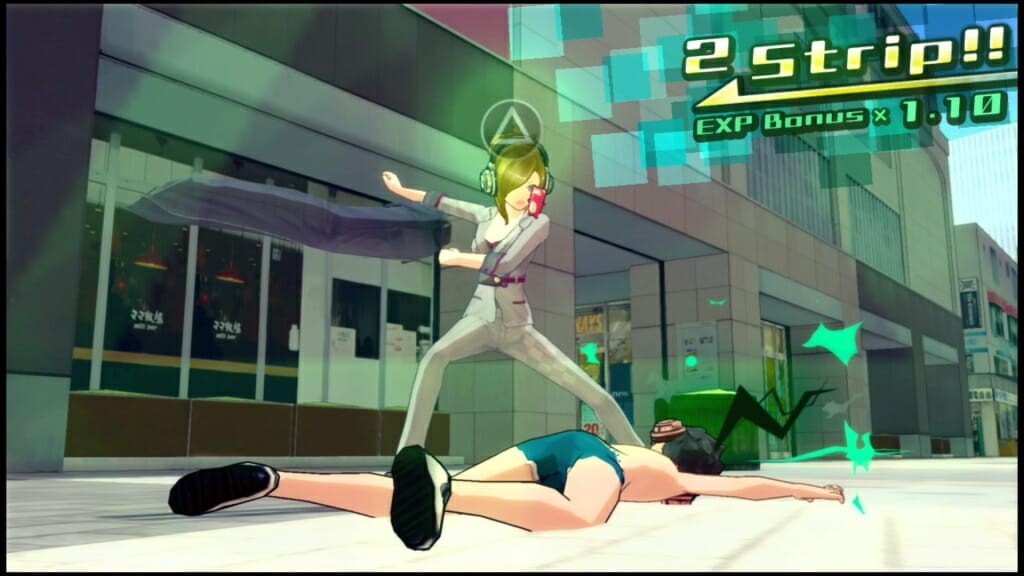
Where Rockstar’s games focus on an almost existential obsession with the faults of a capitalist world, Acquire’s staff places a greater value on consumerism as the primary express themselves. It’s not that Japan doesn’t have issues with capitalism; rather that otaku subcultures are a bi-product of a capitalist society that have learned to use the structure that originally helped alienate them to create their own space and gain power within Japan’s economy and social sphere.
With this in mind, it’s clear to see that there’s a stark difference between Grand Theft Auto and Akiba’s Trip, which each capture the socio-economic anxieties of their respective nations. America’s disenfranchised youths of Generation X grew up in a world that didn’t respect them, which they paid back in turn. They barely understood their role in society and lashed out in attempts to undermine the socioeconomic norms of the world through apathy and passive aggression. One only need to listen to music from the ‘90s grunge boom, or see the indie film scene from the period was producing to really get a feel for that. Going back further, generations like the Baby Boomers and Silent Generation witnessed national embarrassments like the Watergate scandal play out on live television, and had their fires stoked by the massive protests against the Vietnam War.

Japan, meanwhile, had the hikikomori phenomenon of the 1990s, in which many started to shut themselves away from the world and escape into media. Entire subcultures were birthed from the circumstances, including the growing doujin and visual novel scenes, and much of that became directly connected to the greater Japanese game industry.
Akiba’s Trip: Undead and Undressed isn’t as erotic as its whole “stripping” premise would imply, but there are moments of clear fanservice among the lead women. Grand Theft Auto, on the other hand, rarely allows its female cast to have agency. Instead, women become little more than window dressing for the whole criminal fantasy, alongside money, guns, and cars.

In this light, it’s not so much a clear divide of positive and negative attitudes, but a different understanding of status and power through the masculine lens of each respective culture’s views on masculinity. About the one area they connect on completely would be is the sexualization of women. If there’s one thing that the United States and Japan have in common, it’s the existence of patriarchal power structures that culturally influence media produced within their given countries.
In the next part, we’ll be taking a look at Sleeping Dogs and the Yakuza series, and how their takes on world design, identity, and self-determination show a further difference between the western and Japanese understandings of being oneself in an oppressive culture.














